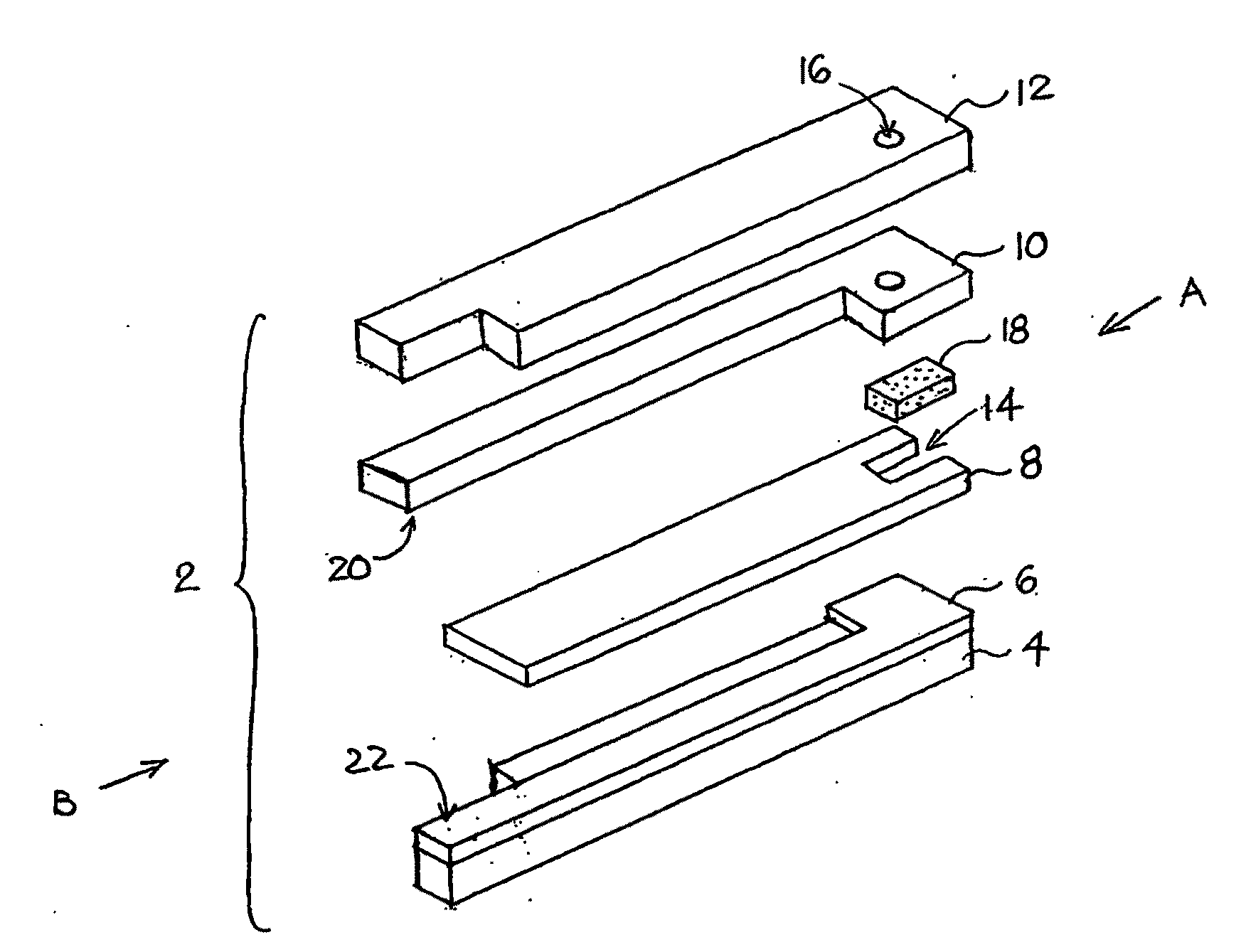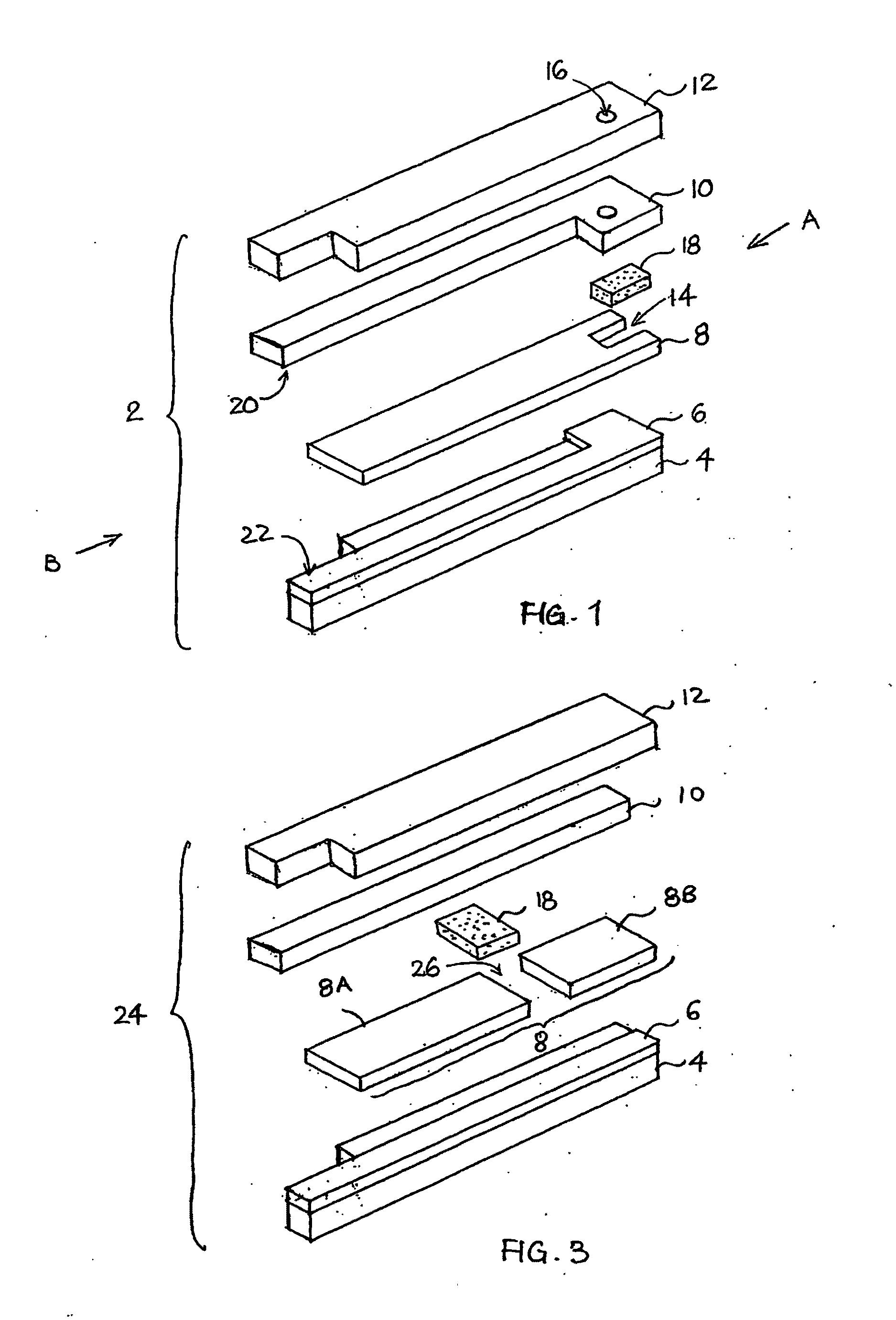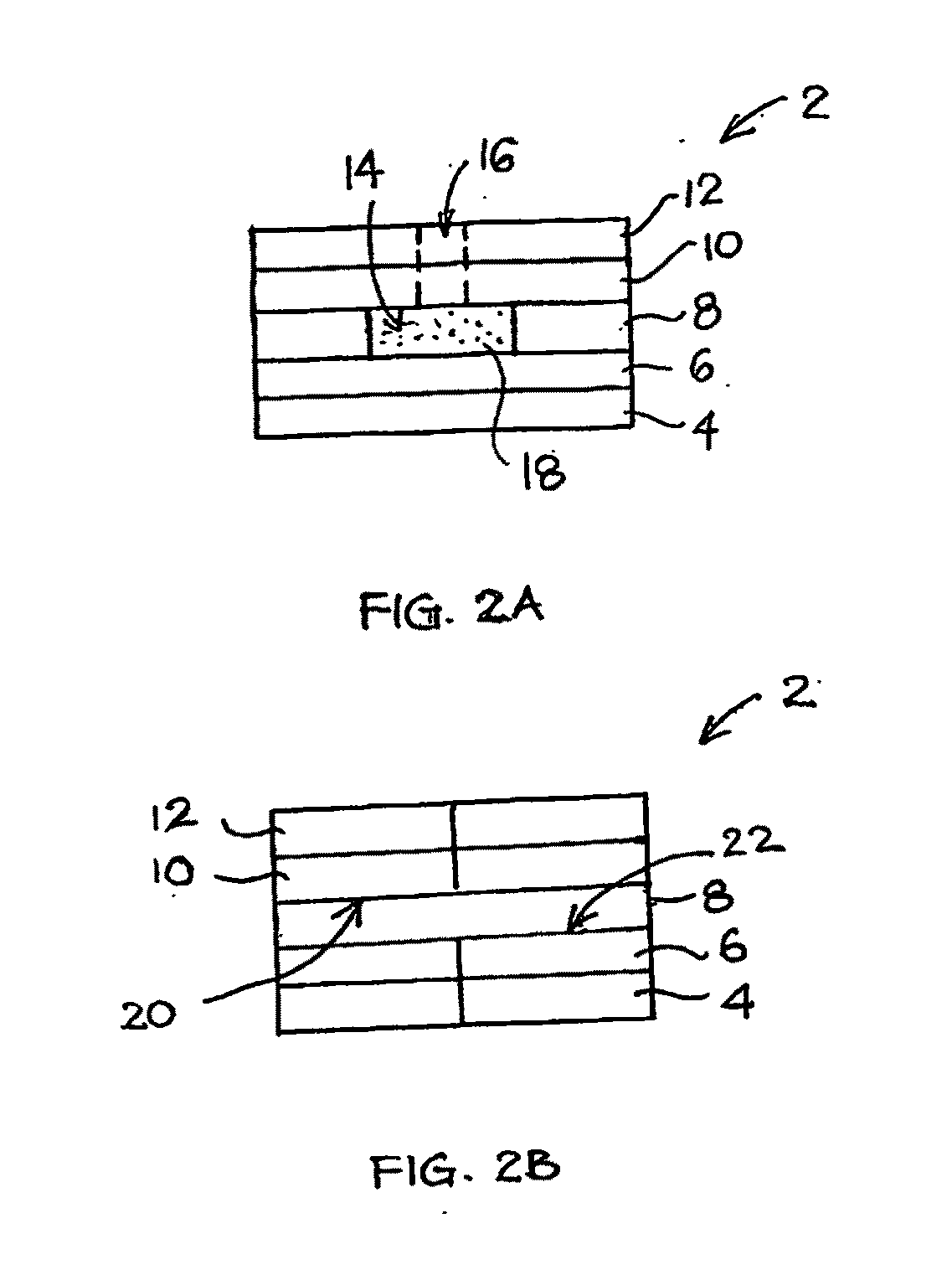Test-Sensor Production Monitoring Using XRF Spectrometry
a technology of xrf spectrometry and testsensor, which is applied in the field of polymer materials, can solve the problems of difficult co-polymerization of vinylferrocene, difficult quantitative measurement of osub>2 /sub>at high glucose concentration, and compromise of measurement accuracy based on hsub>2/sub>osub>2 /sub> and osub>2 /sub>measurements,
- Summary
- Abstract
- Description
- Claims
- Application Information
AI Technical Summary
Problems solved by technology
Method used
Image
Examples
example 1
Construction of a Diffusional Mediator Biosensor
[0108]FIG. 1 shows an exploded isometric view of a tip-filling biosensor 2 according to an embodiment of the present invention. The manufacturing process of the biosensor 2 according to the specific embodiment is next described. Firstly, an array of carbon electrodes, such as of Electrodag 423SS available from Acheson Colloids Co., Ontario, Calif., U.S.A., is printed using a suitable mask on a polyester-film substrate. The printed substrate is then dried at a temperature of around 70° C. for a predetermined period of time, for example twenty-four hours. Thereafter, a double sided tape with holes appropriately formed therein is placed on the printed substrate. These holes would eventually define the recesses 14 and the openings for exposing the electrode portions 20, 22. A uniformed nanoparticulate membrane is then screen-printed, using a suitable mask, on the working surfaces of the carbon electrodes with an aqueous slurry “ink” of PVF...
example 2
Synthesis of Poly(Vinylferrocene-Co-Acrylamide), Poly(Vinylferrocene-Co-Acrylic Acid) and Poly(Vinylferrocene-O-Acrylamido-Sulphonic Acid) Copolymers
[0110]Glucose oxidase (GOx, EC 1.1.3.4, from Aspergillus niger, 191 units / mg) was purchased from Fluka (CH-9470 Buchs, Switzerland). Ferrocene (Fc), Vinylferrocene (VFc), acrylamide (AA), acrylic acid (AC), 2-acrylamido-2-methyl-1-propane-sulfonic acid (cat. no. 28,273, “acrylamido-sulfonic acid” or AAS) and persulfate salts were purchased from Sigma-Aldrich (St. Luis, Mo., USA.). All other chemicals such as acetone, ethanol, and phosphate buffered saline used were of certified analytical grade. All solutions that were used were prepared with deionized water.
[0111]UV spectra of polymers produced in the experiment was performed and recorded on an Agilent 8453 UV-visible spectrophotometer. Molecular weights were determined with a Toyo Soda high performance gel permeation chromatography in water and standard poly(ethylene oxide) and poly(e...
example 3
Obtaining Cyclic Voltammograms of the Redox Polymers
[0123]Redox polymers were prepared in phosphate-buffered saline (PBS) solutions in the presence of 0.0 μg GOx, 10 μg GOx, and 10 μg GOx and 10 mM glucose.
[0124]Electrochemical tests were performed with an AutoLab potentiostat / galvanostat running under the general purpose electrochemical system (GPES) manager version 4.9. A 3-electrode system cell, housed in a Faraday cage. The electrodes were a (Ag / AgCl) reference electrode, a platinum wire counter electrode and an Au working electrode (surface area of 7.94 mm2).
[0125]In contrast to vinylferrocene, the redox polymers that were synthesized have high solubility in water but are insoluble in most organic solvents. This characteristic renders the redox polymers ideal for uses as mediators in biosensing, particularly in enzyme-linked biosensing since most enzymes only work in aqueous media.
[0126]FIG. 9 shows typical cyclic voltammograms of the In PBS containing only the redox polymers, ...
PUM
 Login to View More
Login to View More Abstract
Description
Claims
Application Information
 Login to View More
Login to View More - R&D
- Intellectual Property
- Life Sciences
- Materials
- Tech Scout
- Unparalleled Data Quality
- Higher Quality Content
- 60% Fewer Hallucinations
Browse by: Latest US Patents, China's latest patents, Technical Efficacy Thesaurus, Application Domain, Technology Topic, Popular Technical Reports.
© 2025 PatSnap. All rights reserved.Legal|Privacy policy|Modern Slavery Act Transparency Statement|Sitemap|About US| Contact US: help@patsnap.com



